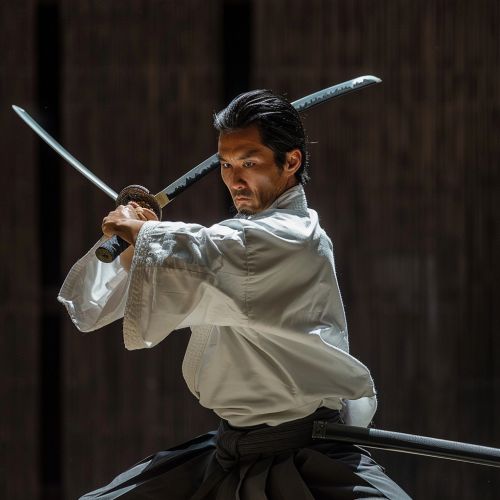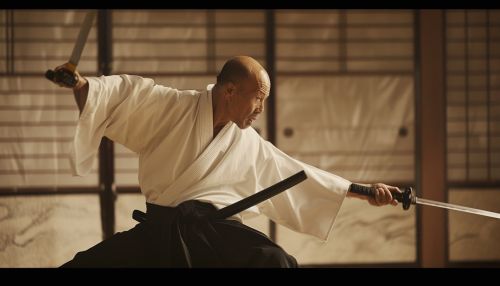Kenjutsu
Introduction
Kenjutsu (剣術) is a traditional Japanese martial art that focuses on sword techniques. Derived from the samurai warrior culture, it has been practiced for centuries and forms the basis of many other Japanese martial arts. Kenjutsu is not just about physical skill; it also involves mental discipline, strategy, and understanding the philosophy behind the art. Japanese martial arts often emphasize the importance of the mind-body connection, and Kenjutsu is no exception.


History
The history of Kenjutsu dates back to the Heian period (794-1185), when the samurai class began to rise in prominence. The art evolved over time, with different schools (ryūha) developing their own unique styles and techniques. During the Sengoku period (1467-1603), a time of constant warfare, Kenjutsu saw significant development as samurai tested and refined their skills on the battlefield. The Edo period (1603-1868) saw the establishment of many famous Kenjutsu schools, such as the Ittō-ryū and Katori Shintō-ryū, which still exist today.
Techniques
Kenjutsu techniques are diverse and complex, reflecting the many different schools and styles. They can be broadly classified into two categories: shikake-waza (initiating techniques) and ōji-waza (responding techniques). Shikake-waza are offensive techniques used to attack the opponent, while ōji-waza are defensive techniques used to respond to the opponent's attacks. Techniques can also be classified by the type of cut, such as vertical, horizontal, or diagonal, and by the target area, such as the head, body, or limbs.
Training
Training in Kenjutsu typically involves learning and practicing techniques, kata (prearranged forms), and sparring. Beginners usually start with basic sword handling and footwork, before progressing to more advanced techniques and kata. Sparring, or free practice, is an important part of training, allowing students to apply what they have learned in a controlled environment. Safety equipment, such as a bogu (protective armor) and a shinai (bamboo sword), is often used in sparring to prevent injury.
Philosophy
The philosophy of Kenjutsu is deeply rooted in the samurai code of bushido (the way of the warrior), which emphasizes virtues such as loyalty, courage, and honor. Many practitioners view Kenjutsu as a means of personal development and spiritual growth, rather than just a way to learn how to fight. The concept of zanshin (remaining mind), for example, teaches practitioners to maintain awareness and readiness at all times, both in and out of combat.
Modern Kenjutsu
In the modern era, Kenjutsu continues to be practiced both in Japan and around the world. While the art has evolved over time, the core principles and techniques remain largely unchanged. Today, Kenjutsu is often studied alongside other Japanese martial arts, such as Iaido and Kendo, and is also incorporated into the training of some law enforcement and military units.
